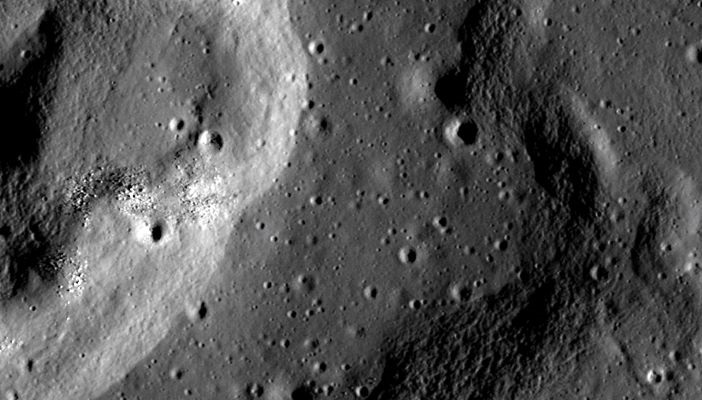Education
The Lunar Alarm Clock: New Study Characterizes Regular Moonquakes

Every morning and afternoon, like clockwork, the surface of the Moon trembles with tiny “moonquakes.” Now, new analysis of seismic activity on the Moon has characterized these events and discovered that some of them are not what they seem.
Without an atmosphere to insulate it, the Moon experiences drastic temperature variation, from up to 250 degrees Fahrenheit during the peak of the day to -208° F at night. These extreme swings cause the Moon’s surface to expand when it’s hot and contract when it’s cold, and this movement leads to small shaking and cracking near the surface called thermal moonquakes.
In the 1970s, astronauts from the Apollo 17 mission placed an array of three seismometers on the Moon that could measure thermal moonquakes. The seismometers collected data over a period of eight months, from October 1976 to May 1977. The data remained largely untouched until recently. In the new study, this lunar seismic data has been reanalyzed with modern techniques like machine learning.
Led by Francesco Civilini, a recent Caltech postdoc, the research shows that thermal moonquakes occur with precise regularity, every afternoon as the Sun leaves its peak position in the sky and the surface of the Moon begins to cool off. But the study’s machine-learning model also detected additional signatures of seismic activity in the morning that looked different from the evening moonquakes. Surprisingly, these turned out not to be thermal moonquakes after all.
The researchers were able to triangulate the source of the shaking and found that the morning tremors were actually coming from the Apollo 17 lunar lander base, a few hundred meters away. As the structure heated and expanded in the morning, its creaking vibrations were detected by the seismic array.
“Every lunar morning when the sun hits the lander, it starts popping off,” says Allen Husker, research professor of geophysics and co-author on the new study. “Every five to six minutes another one, over a period of five to seven Earth hours. They were incredibly regular and repeating.”
-
Auto2 years ago
Honda Marine Debuts All-New BF350 Outboard Company’s First V8 Motor Available Commercially, Flagship Model Offers Premium Power and Unparalleled Performance for Extraordinary Boating Experiences
-
Auto2 years ago
New Features Further Increase Desirability Of Bentayga Range
-
Technology1 year ago
Oracle Partners with TELMEX-Triara to Become the Only Hyperscaler with Two Cloud Regions in Mexico
-
Auto1 year ago
Honda and Acura Electric Vehicles Will Have Access to Largest EV Charging Networks in North America Aided by New Agreements with EVgo and Electrify America
-
Lifestyle2 years ago
2023 Nike World Basketball Festival Brings the Best of Basketball Style, Culture and Community